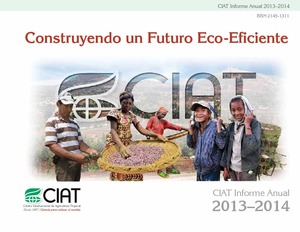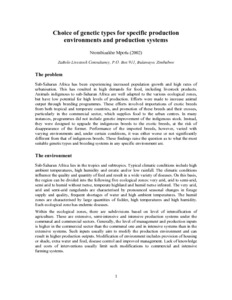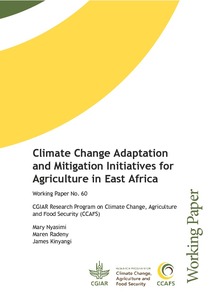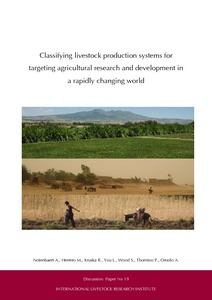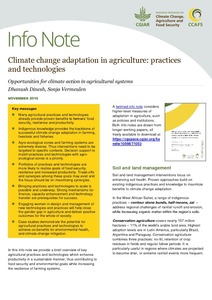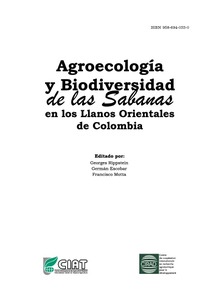terras de pastagem
AGROVOC URI:
Chemical composition, antioxidant activity and bioactive compounds of vegetation species ingested by goats on semiarid rangelands
Choice of genetic types for specific production environments and production systems
Classification and description of the major farming systems incorporating ruminant livestock in West Africa
A classification of the major ruminant livestock production systems in West Africa is proposed. The proposed typology has two major classes of systems-sole livestock and crop-livestock. The sole livestock class has two systems (rangeland-based and landless) and the crop-livestock class has three sub-classes (annual crop-livestock, tree-crop-livestock and irrigated/flooded cropland-livestock). Within the 3 crop-livestock subclasses 13 systems defined by the dominant crops are identified.
Climate change vulnerability and risk assessment of agriculture and food security in Ethiopia: which way forward?
Climate change adaptation and mitigation initiatives for agriculture in East Africa
National governments across East Africa are in the process of formulating and implementing adaptation and mitigation strategies to assist farmers cope with climate change. These include formulating actions, frameworks and programs to address climate change and embedding these within the long-term national development plans.
Classifying livestock production systems for targeting agricultural research and development in a rapidly changing world
A myriad of agricultural and livestock production systems co-exist in the developing countries. Agricultural research for development should therefore aim at delivering strategies that are well targeted to the heterogeneous landscapes and diverse biophysical and socioeconomic contexts the agricultural production system is operating in. To that end, in the recent past several approaches to spatially delineate landscapes with broadly similar production strategies, constraints and investment opportunities, have been applied. The mapped Seré and
Climate change, agriculture and food security: a strategy for change
Agriculture – on which we all depend for our food – is under threat from climate change. There is no doubt that systems worldwide will have to adapt, but while consumers may barely notice in developed countries, millions of people in developing countries face a very real and direct threat to their food security and livelihoods. Even without climate change, many agricultural systems in developing countries are nearing crisis point. Feeding a rapidly rising global population is taking a heavy toll on farmlands, rangelands, fisheries and forests. Water is becoming scarce in many regions.
Climate change adaptation in agriculture: practices and technologies. Opportunities for climate action in agricultural systems
In this info note we provide a brief overview of key
agricultural practices and technologies which enhance
productivity in a sustainable manner, thus contributing to
food security and environmental goals while increasing
the resilience of farming systems.
A twinned info note considers
higher-level measures of
adaptation in agriculture, such
as policies and institutions. Updated: November 2016.
Both info notes are drawn from
longer working papers, all
freely available to download at
Claves sinópticas ilustradas para identificar especies de gramíneas comunes en la altillanura de los Llanos Orientales de Colombia
Climate change, agriculture, food security, East Africa
In East Africa, agricultural systems are highly vulnerable to climate change and variability because of high dependence on rainfall. The increasing frequency and severity of drought, heat and cold stress as well as floods are likely to lead to major food crises in the region. Rapid population growth rates, poverty and inequality exacerbate problems caused by exposure to climatic change. The region, therefore, requires long-term actions to build the capacity of its people and institutions to better adapt to climate change and climate variability, and reduce greenhouse gas emissions.

